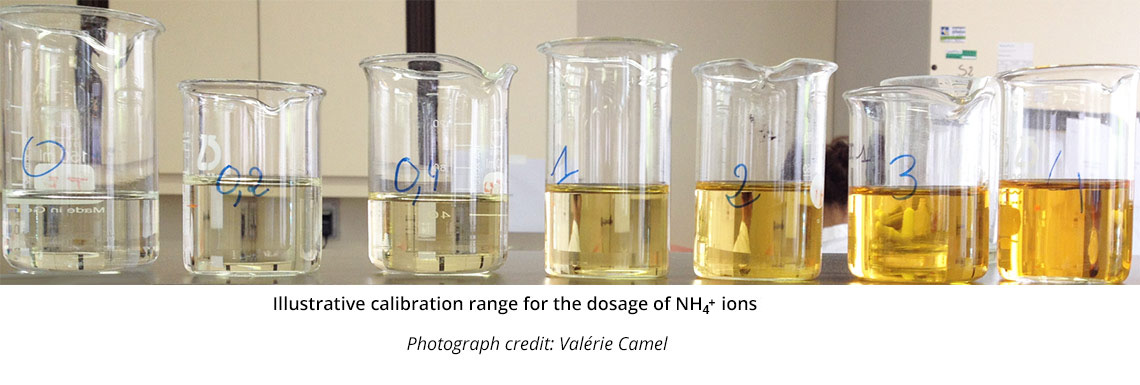Determination of NH4+ ions using spectrophotometry
Dosage principle
In the presence of potassium or sodium hydroxide (alkaline environment), there is a reaction between the Nessler reagent (alkaline potassium iodo-mercurate) and NH3 ions, creating a compound with a color ranging from orange-yellow to brown. This chemical can be analyzed with a spectrophotometric measurement at a wavelength close to 420 nm.
The complex formation reaction is as follows:
H4+ + OH- in excess
→ NH3 + H2O
2 (HgI4)2- + 2 NH3
Mercury iodide
→ Mercury iodide
2 NH3HgI2 + 4 I-
2 NH3HgI2
→ NH2Hg2I3 + I- + NH4+
Mercury ammonium iodide (yellow-orange)
Mercury ammonium iodide (yellow-orange)

To prevent any interference from any calcium or magnesium ions that might be present, double sodium and potassium tartrate must first be added to the sample.

Precautions for use: Filtering the water before dosing is preferable since the presence of suspended matter is capable of falsifying the colorimetric measurement.





